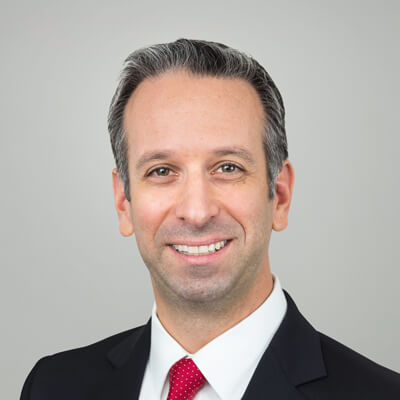Originally Published in

July 17, 2018
By Howard Raber, Esq., Ariel Property Advisors
Read The Article on New York Real Estate Journal
Midtown East’s allure to real estate developers is no mystery, with the neighborhood’s centralized location and numerous transportation options a significant draw for businesses and residents alike. Demand for land in the region is poised to remain strong in the years ahead as commercial developers seek opportunities to take advantage of the recent rezoning of Midtown East, while residential developers aim to capture the live-work demographic.


(From left to right) Howard Raber, Director - Investment Sales and Amit Israni, Analyst - Investment Research
Manhattan’s development market saw dollar volume rise 5% to $2.12 billion, although transaction volume fell 11% to 68 sales for the trailing 12-month period ending in June compared to a year earlier, according to preliminary data compiled by Ariel Property Advisors’ investment research division. During this time, Midtown East proved to be a dominant force, with 17 transactions accounting for 25% of the aggregate volume. By comparison, Midtown West performed similarly with 18 transactions, while the Upper East Side was less active, with only 9 sales.
The attraction of Midtown East to both commercial and residential developers is abundantly evident when looking at the pipeline. In fact, about 9.4 million s/f is currently under construction or is in planning stages in the region, according to Recity analytics. Of this total, 2.7 million s/f is for residential purposes; although about 700,000 s/f should be attributed to the condo conversion portion at the Waldorf Astoria on Lexington Ave. More projects are on the way. For instance, Gamma Real Estate paid $98 million for the 260,000 buildable s/f site at 428-432 East 58th St., which is expected to become a residential condo building.
Minrav USA acquired the 116,000 buildable s/f development site at 368 Third Ave. for $64 million. Included in the s/f is the previous acquisition of off-site inclusionary air rights that blended down the overall basis. Approved plans provide for a 34-story, 103-unit residential building.
Still, considering that Midtown is the largest central business district in the world, it is no surprise that the remaining 5.9 million s/f reported by Recity is classified as office and commercial projects. Developments include One Vanderbilt, SL Green Realty Corp.’s 1401-foot-tall office tower currently being developed next to Grand Central Terminal, and 425 Park Ave., a 44-story office tower being built by L&L Holding.
Even with this bustling pipeline of activity, Midtown East is undergoing some radical changes due to at least two factors. First, in a move to foster growth and revitalization of office product in the area, the impact of last year’s passage of the Midtown East rezoning cannot be overlooked. Last August, city council approved the rezoning of 73 blocks in the district. By increasing the as-of-right floor-to-area ratio(FAR), or the ratio of usable floor area to lot size, the rezoning paves the way for 6.5 million s/f of new office space, according to reports. This change also allows for landmarked buildings to be able to freely transfer and monetize air rights that were at one time untradeable. The effect of this zoning change, however, will by no means be immediate. For instance, the City Planning Commission identified 16 sites that may be expected to benefit from the density bonus in the next 20 years or so.
Still, investors are taking advantage of present day opportunities. JPMorgan has already taken steps to utilize the new zoning by reportedly using air rights from Grand Central Station and St. Bartholomew’s Church to redevelop its current 270 Park Ave. headquarters and replace it with a new 70-story, 2.5 million s/f tower. Pfizer is in the process of selling its headquarters located on East 42nd St. as due to the rezoning, that property can now add 781,869 s/f of space.
Another factor that will affect Midtown East future development is city planning’s recently proposed zoning text amendment that will require developers to obtain a special permit for the construction of new hotels within Light Manufacturing Districts (M-1 zoning). The intent of this measure is to promote diversity in commercial and office development while simultaneously suppressing oversupply in the hotel sector.
According to the city’s analysis, the ongoing surge of new hotel construction should yield a surplus of over 9,000 rooms by the year 2028. Tourism remains at the center of NYC’s economy, but the city contends hotels in M-1 zones need to be planned much more prudently. Public review of this proposal commenced in April.
All of the above changes naturally lead owners to question how land values will be affected. It is difficult to predict where pricing will head considering that we are in a period of rising interest rates, increased construction costs and a softening of the residential rental and condo market. Yet, we are also in the midst of strong economic growth and low unemployment. Moreover, developers are eager to produce new office product to compete with Hudson Yards, while also looking to take advantage of current market trends, such as the rise of co-working space. Land pricing in Midtown East has remained stable, according to the trailing year-over-year analysis, with 2018’s average price per buildable s/f at $694, compared to last year’s average of $684.
Whatever effects that may result due to last year’s Midtown East rezoning or the proposed change to light manufacturing zones, strong fundamentals will continue to favor buying development sites in Midtown East as demand for well-priced, high-quality locations in the area has not waned. With the local and national economy expected to improve further, domestic and international investors will likely continue to spend capital in Manhattan as it remains a safe-haven that has historically been one of the best bets around.
More information is available from Howard Raber, Esq. at 212.544.9500 ext.23 or e-mail hraber@arielpa.com.